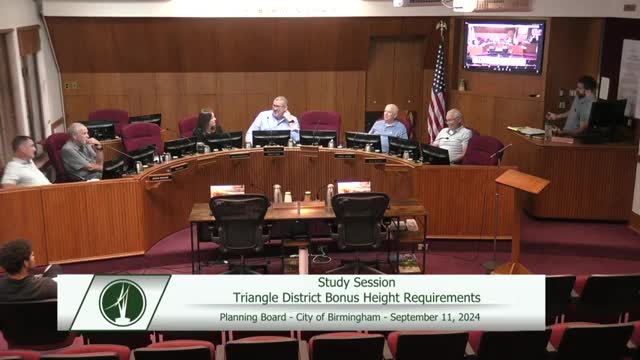Walgreens closures spark urgent call for urban redevelopment
September 11, 2024 | Birmingham City, Oakland County, Michigan
This article was created by AI summarizing key points discussed. AI makes mistakes, so for full details and context, please refer to the video of the full meeting. Please report any errors so we can fix them. Report an error »

In a recent government meeting, officials discussed the future of urban development in light of significant retail closures, including Walgreens shutting down approximately 1,400 stores nationwide. The conversation highlighted the need for innovative redevelopment strategies, particularly in areas with vacant retail spaces.
Participants emphasized the importance of re-evaluating parking standards to encourage development in the region. One official suggested that revising parking requirements could incentivize new projects, especially since previous plans for a parking deck have not materialized. The idea is to create a more inviting environment for developers, potentially leading to increased investment in the area.
The discussion also touched on the potential for increased building heights in certain districts, particularly near the former Walgreens site. Officials expressed interest in exploring the visual impact of taller structures and how they could enhance the urban landscape. There was a consensus that a careful analysis of massing—how buildings relate to one another in terms of height and scale—would be essential in determining appropriate development strategies.
Concerns were raised about the lack of green spaces in the area, with some officials advocating for the inclusion of parks or plazas in new developments. The need for public spaces was underscored, as they play a crucial role in enhancing community livability and attracting residents.
As the meeting progressed, officials acknowledged the challenges posed by existing commercial developments that have not met community expectations. There was a call for stricter requirements on commercial frontages to ensure that new developments contribute positively to the district's character.
Overall, the meeting underscored a collective desire to rethink urban planning strategies, balancing the need for residential growth with the preservation of community spaces and the enhancement of public amenities. The discussions will continue as officials seek to refine their approach to urban development in the face of changing retail landscapes and community needs.
Participants emphasized the importance of re-evaluating parking standards to encourage development in the region. One official suggested that revising parking requirements could incentivize new projects, especially since previous plans for a parking deck have not materialized. The idea is to create a more inviting environment for developers, potentially leading to increased investment in the area.
The discussion also touched on the potential for increased building heights in certain districts, particularly near the former Walgreens site. Officials expressed interest in exploring the visual impact of taller structures and how they could enhance the urban landscape. There was a consensus that a careful analysis of massing—how buildings relate to one another in terms of height and scale—would be essential in determining appropriate development strategies.
Concerns were raised about the lack of green spaces in the area, with some officials advocating for the inclusion of parks or plazas in new developments. The need for public spaces was underscored, as they play a crucial role in enhancing community livability and attracting residents.
As the meeting progressed, officials acknowledged the challenges posed by existing commercial developments that have not met community expectations. There was a call for stricter requirements on commercial frontages to ensure that new developments contribute positively to the district's character.
Overall, the meeting underscored a collective desire to rethink urban planning strategies, balancing the need for residential growth with the preservation of community spaces and the enhancement of public amenities. The discussions will continue as officials seek to refine their approach to urban development in the face of changing retail landscapes and community needs.
View full meeting
This article is based on a recent meeting—watch the full video and explore the complete transcript for deeper insights into the discussion.
View full meeting
